2Yew tree
Taxus baccata
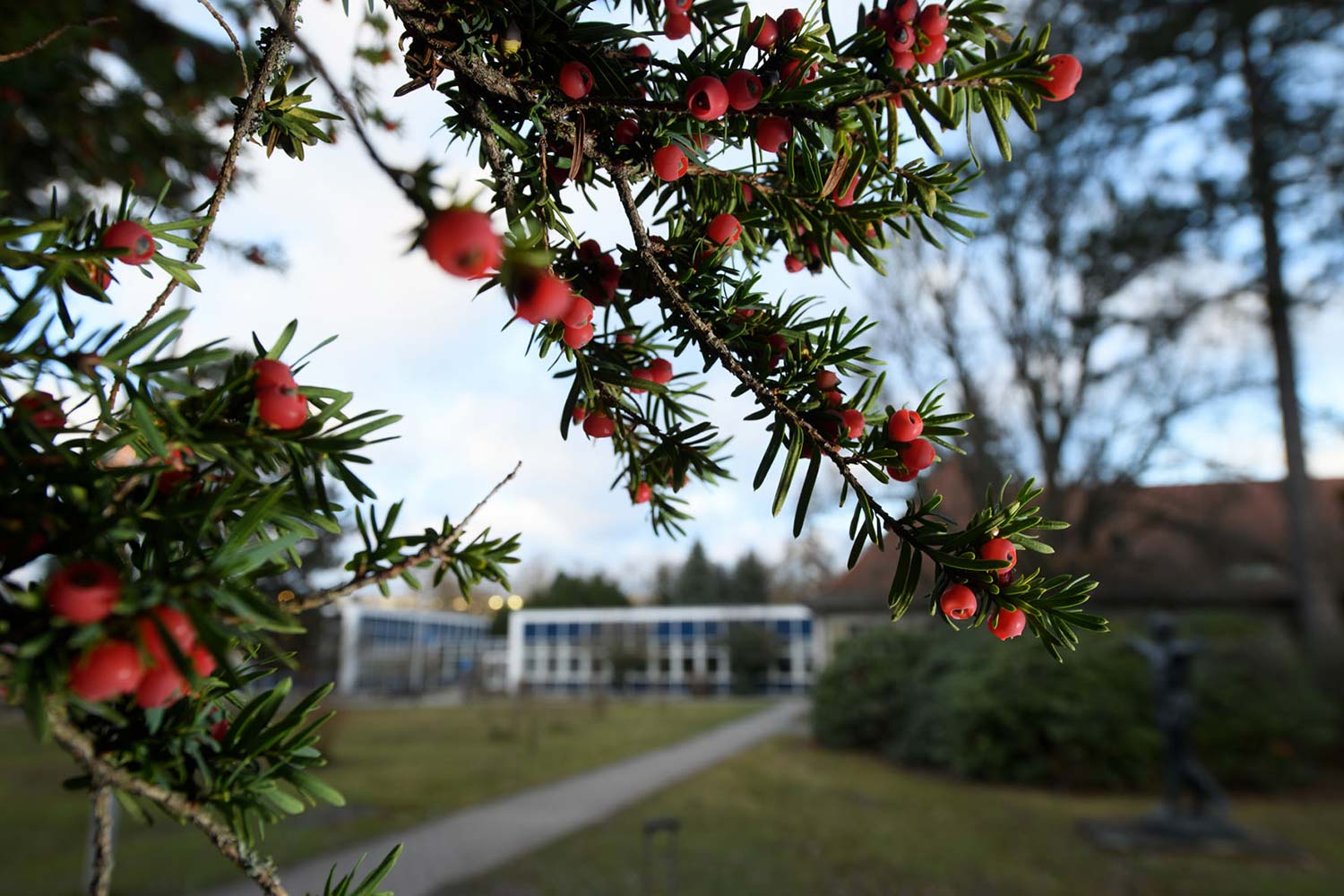
The second tree is a European yew, botanical name Taxus baccata, from the yew family or Taxaceae.
The European yew tree is an evergreen, meaning it doesn't lose its foliage in winter. Depending on its location, it grows as a tree or shrub to a height rarely exceeding fifteen meters. Its appearance depends on its age. The crown is initially conical. With increasing age it takes on a more rounded shape.
Young yews usually have a slender trunk, while older specimens tend to have several trunks. The bark also changes over time. Reddish and smooth on young yews, it takes on a grayish tinge and peels off in scales on older specimens.
Like most of its relatives, it is dioecious, so male and female flowers are on separate plants. Only the female plants bear red "fruit" in the fall, which contain a single seed in the center. The specimen on campus is female.
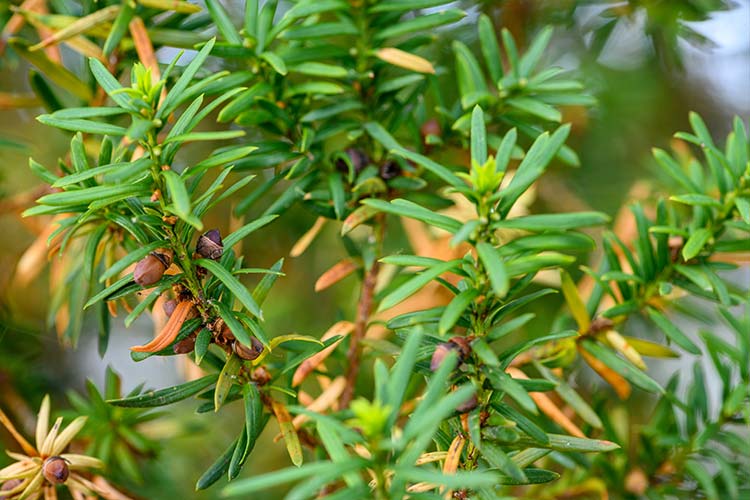
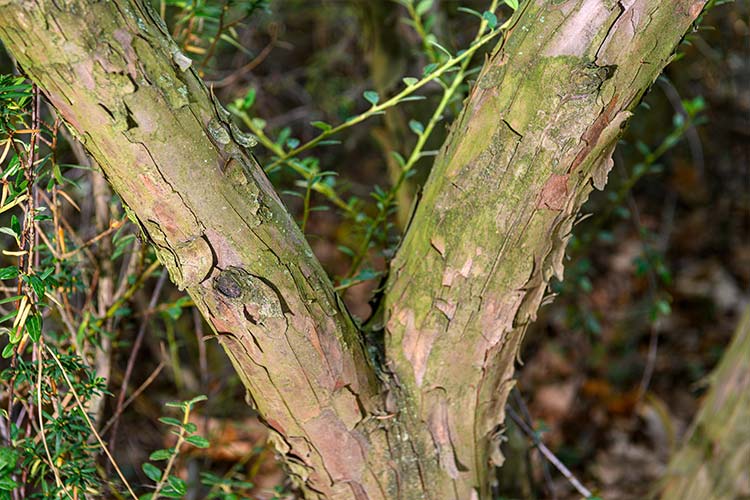
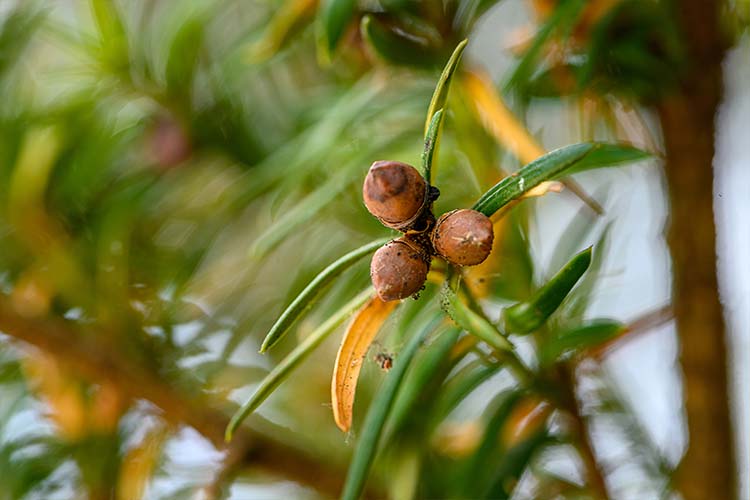
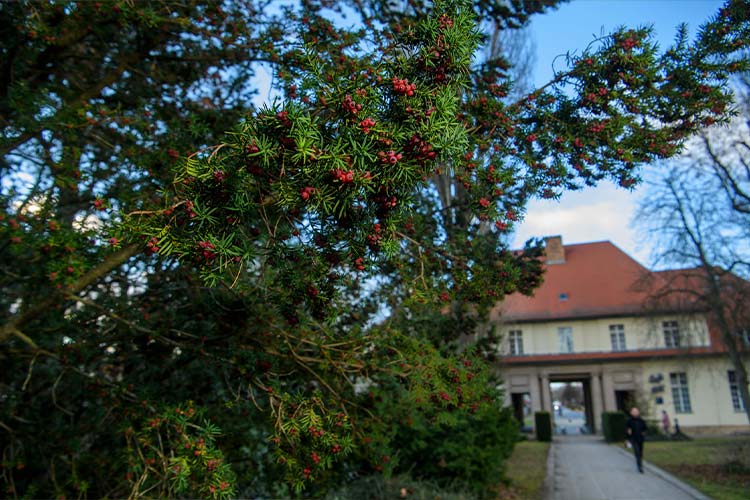
The botanical genus name Taxus is derived from the ancient Greek τόξον for arrow or bow, but also from the Indo-European “teks”: "to make artificially." Both refer to uses of yew wood. Because it is hard, tough and elastic, it is suitable for bow making and carving. Its German name, Eibe, also refers to bow making. This can be traced back to the Old High German iwa, which means bow or archer, and from which the first names Yvonne, Ivo or Yves are also derived. The Latin word bacca means berry or berry-bearing and refers to the fruit.
Yew trees do not require much light and are hardy and slow growing. Therefore they rarely need pruning, making them a popular garden plant.
Several species of yew thrive mainly in temperate zones of the northern hemisphere. In Germany, only the European or common yew tree is native.
In the past, the leaves were taken internally as treatments for worms, epilepsy and all kinds of other ailments. In some regions they are also used as an abortifacient or to regulate fertility. However, nowadays ingestion is strongly discouraged, as most yew tree species contain toxic alkaloids in the bark, needles, and seeds. Ingestion causes nausea, vomiting and impaired consciousness, damages the heart muscle, and can lead to death by respiratory paralysis. Leaves were also used externally in the past to treat wounds in livestock. The red seed coat of the fruit, on the other hand, is not poisonous.
Yew trees are interesting for therapeutic use; they are the source of the cytostatic drug paclitaxel (taxol), which can be used to treat breast, ovarian, bronchial and prostate cancers. It is mainly obtained from the Pacific yew tree (Taxus brevifolia); from the needles of European yew trees it can be obtained semisynthetically from 10-desacetylbaccatin III.
The European yew tree was Tree of the Year in Germany in 1994.